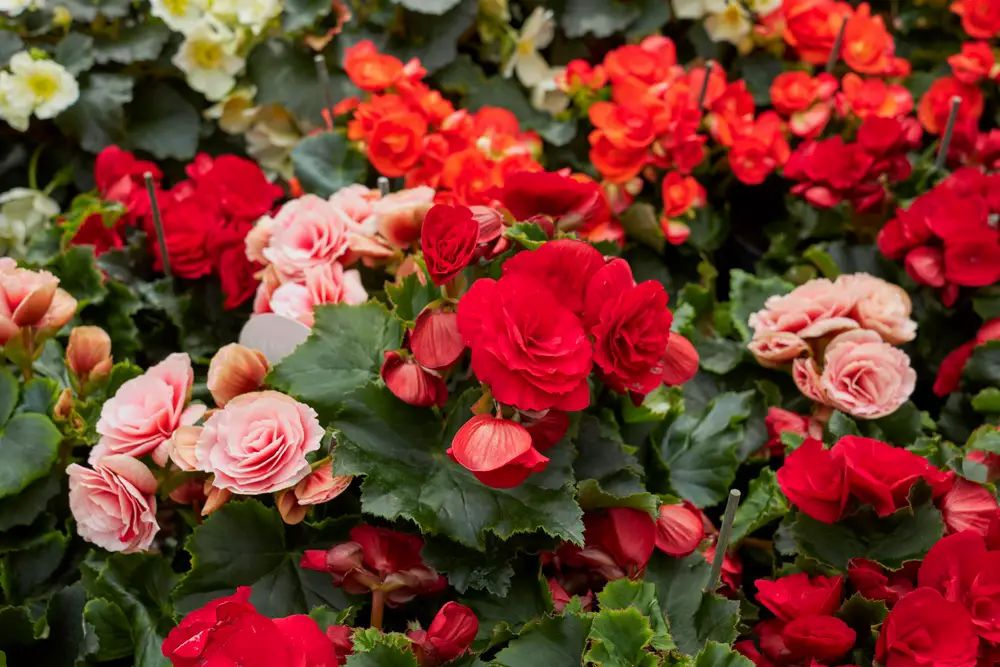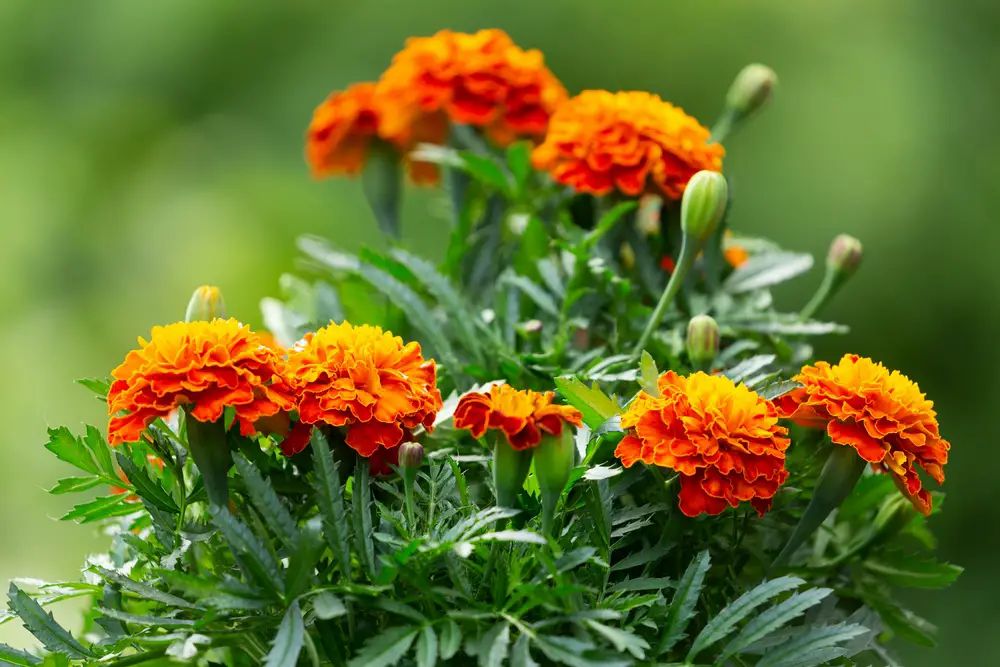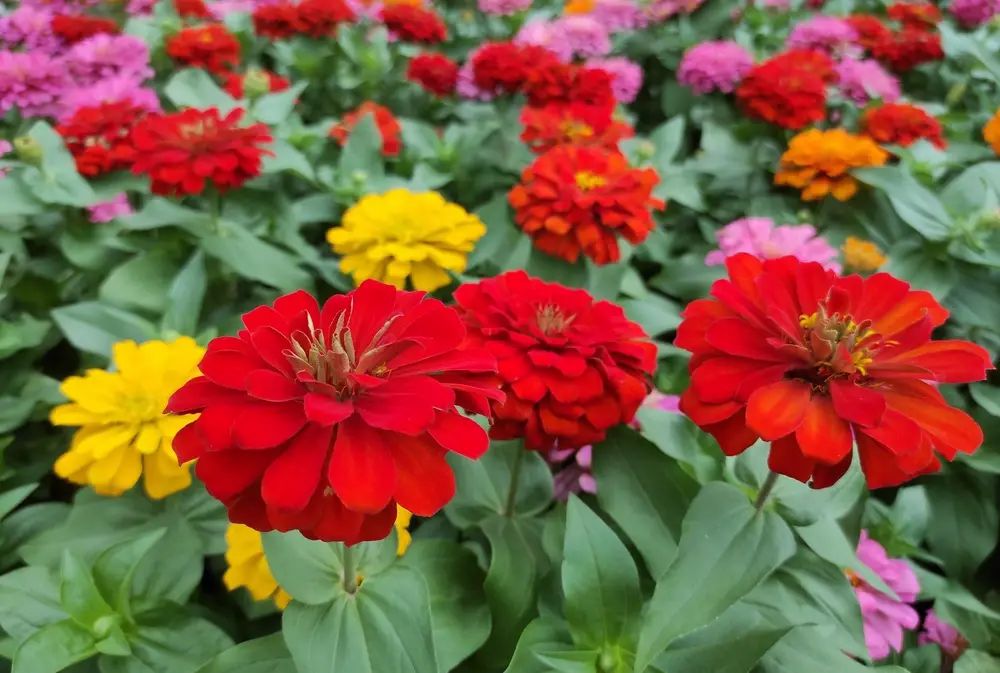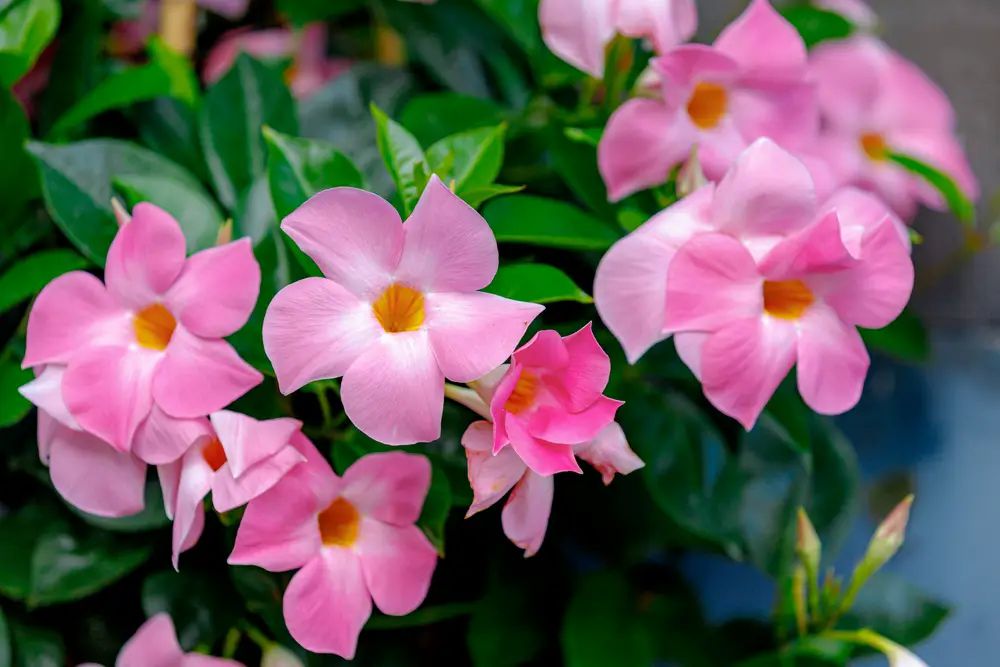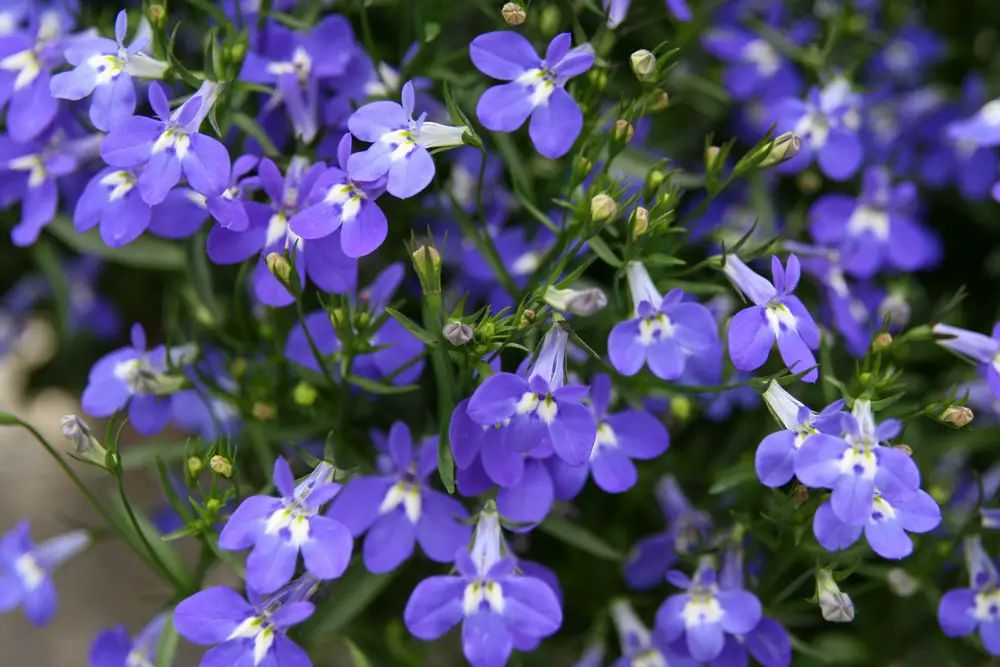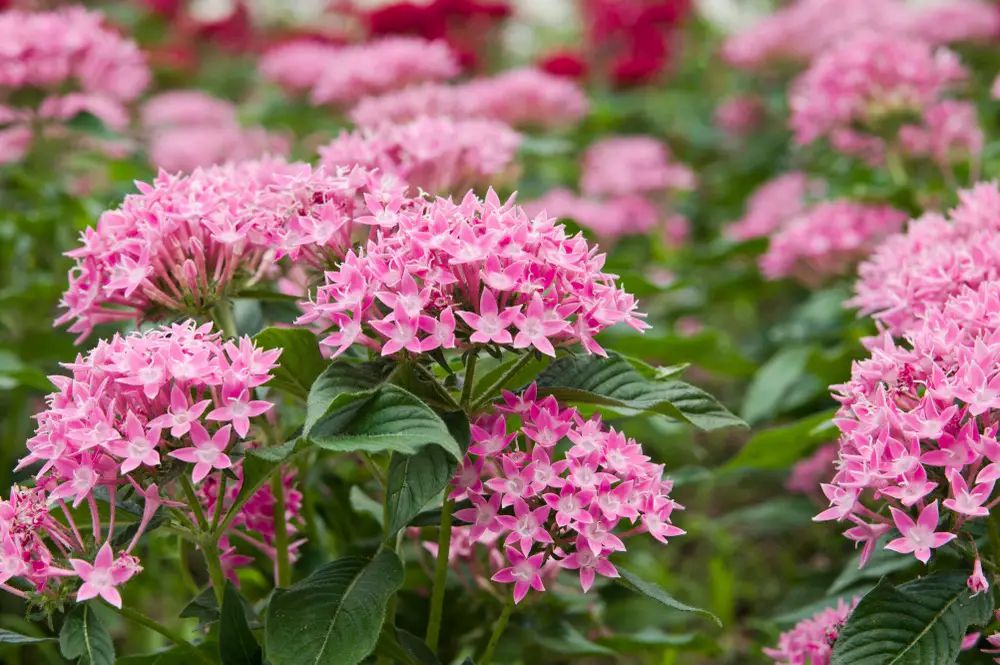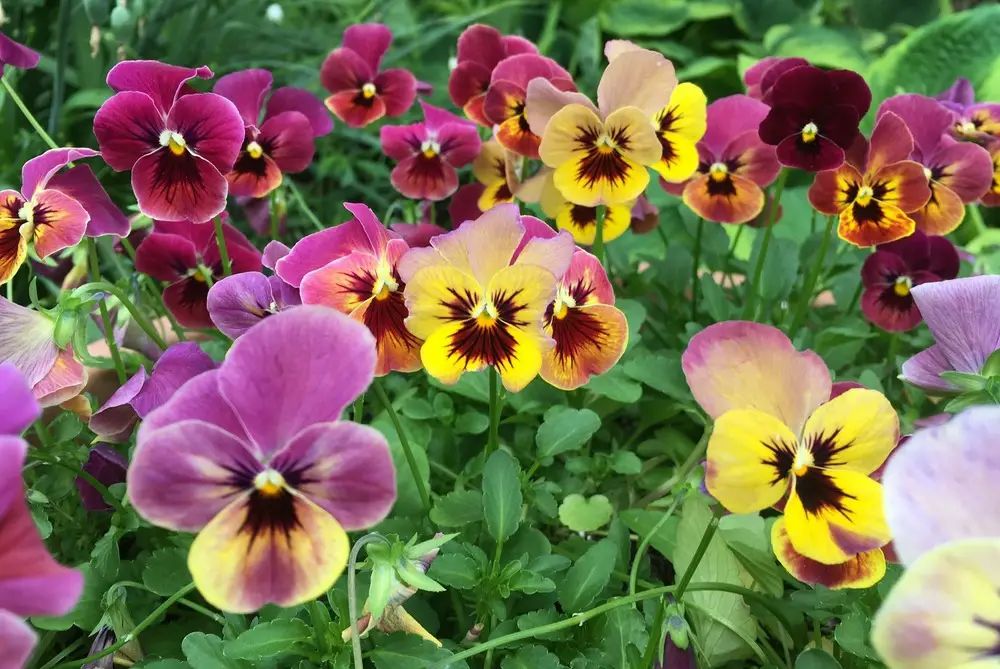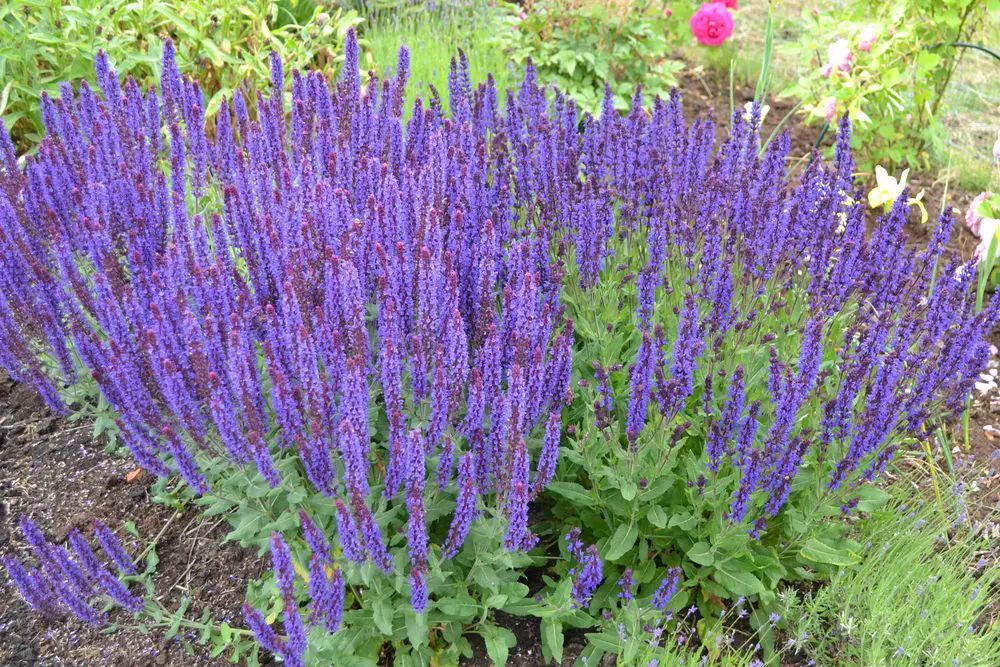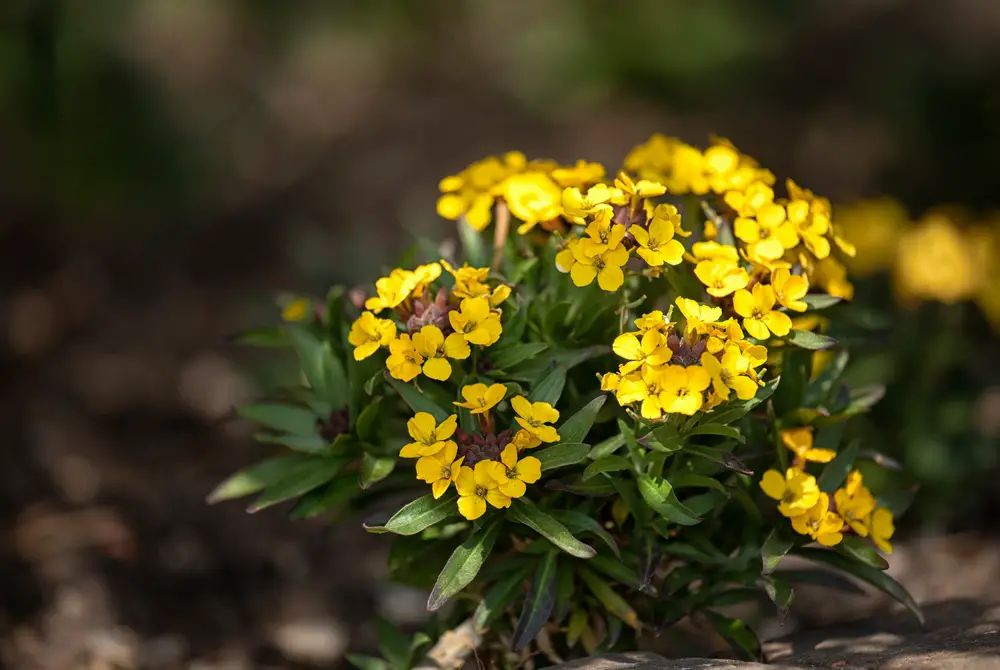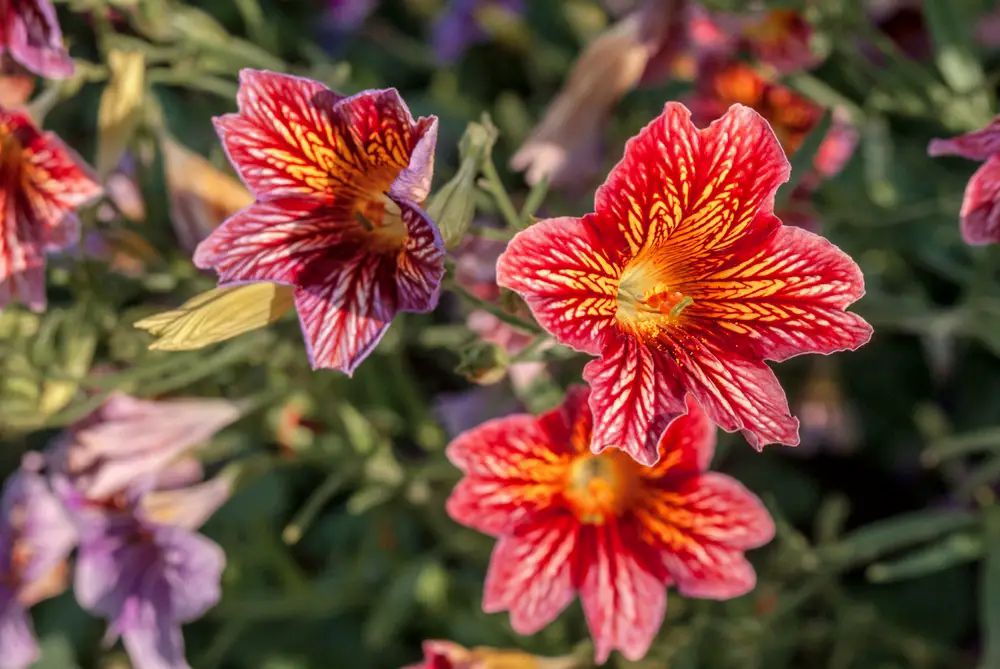15 beautiful flowers to add color to your garden.
Although people usually prefer perennials, annuals offer numerous benefits to your garden. They provide a diverse range of colors to enhance your garden area.
You can experiment with different color combinations as annuals only last for one season. Additionally, annuals can be exceptional bouquet gifts for loved ones.
Continue reading to learn more about cheerful and colorful annuals that can elevate your landscape.
1. Tuberous Begonias
Typically grown as annuals, tuberous begonias offer rose-like blooms in multiple shades of orange, yellow, red, pink, and yellow.
These annuals can grow around 12 to 18 inches tall and flower during the summer and fall months. Tuberous begonias prefer filtered sunlight and well-draining soil.
Regular watering sessions are necessary for their care. Ensure that the soil is slightly damp before watering. Tuberous begonias thrive best in USDA growth zones 9 through 10.
2. Busy Lizzies
Busy Lizzies have delicate and thin-petaled flowers. They are adorned with five round petals in various white, pink, orange, and red hues.
These annuals can grow approximately six inches tall and bloom during multiple seasons, including spring, summer, and fall.
Similar to tuberous begonias, busy lizzies require periodic watering and filtered sunlight to flourish. You can also feed them a balanced 10-10-10 fertilizer for optimum growth conditions. The flower’s USDA growth zone ranges from 2 to 11.
3. Petunias
Petunias are well-known to many households in the United States. With over 35 known species, these annuals come in a variety of colors and shapes. They are renowned for their signature trumpet-shaped five-petaled flowers.
When it comes to color, petunias don’t disappoint. You can choose from several options such as purple, red, white, pink, and yellow. Some petunias even come in multi-colored shades, giving them a unique appearance.
These popular flowers primarily bloom during summer. Additionally, petunias can grow from 6 to 18 inches in length and 18 inches to an impressive 48 inches in width.
In terms of care, petunias prefer sunny days and weekly deep watering sessions. They can thrive in USDA zones 9 through 11.
4. Marigolds
Marigolds resemble carnation flowers with their ball-like structure. These annuals usually come in warm-toned colors like red, orange, and yellow.
Marigolds can reach a height of approximately 6 to 36 inches. These cheerful flowers bloom from early summer until late fall.
Caring for marigolds involves providing full sunshine, weekly watering, and loamy soil. They can grow well in USDA zones 2 to 11.
5. Million Bells
As the name suggests, Million Bells are bell-shaped flowers that bloom in a variety of colors such as violet, white, magenta, red, and bronze.
The blooming window for Million Bells extends from spring to late fall. Size-wise, these annuals can grow between 3 to 9 inches tall and 6 to 24 inches wide.
When caring for Million Bells, provide them with full sunlight exposure and a soilless potting mix. As for watering, you can conduct a “swing test” by gently swinging the pot. If it swings lightly, it needs watering. These flowers thrive in hardiness zones 9 to 11.
6. Zinnias
Zinnias have multiple thin petals that form an overall dome shape. These annuals come in shades ranging from yellow, pink, red, to white.
Zinnias can grow around 6 to 12 inches in height and width. Their blooming period starts from mid-summer until late fall. These flowers are relatively thirsty and require regular deep watering.
They also thrive in full sunlight exposure and well-draining soil. Zinnias tend to do well in USDA zones 3 through 10.
7. Vincas
Vincas offer a simple yet pretty appearance. The small flowers are rounded and have five petals. They come in a variety of shades like pink, purple, white, and red.
Size-wise, vinca plants can reach 6 to 12 inches in height and 8 to 36 inches in width. These annuals flower between summer and late fall.
As a general rule of thumb, if the topsoil of vincas feels dry, it’s time to water them. These colorful flowers prefer full sunlight exposure. Additionally, vincas can survive in hardiness zones 7 to 9.
8. Mandevilla:
Mandevilla is indeed a beautiful tropical addition to your garden. These annuals have distinct trumpet-shaped flowers that come in hues of red, yellow, and pink. They bloom between summer and early fall and can climb up to 3 to 8 feet in length. Being tropical plants, Mandevilla flowers are well-suited to humid weather and require regular misting. They prefer a sunny region where they can receive about six to eight hours of direct light. Mandevillas can thrive in hardiness zones 9 to 11.
9. Lobelia:
Lobelias have a resemblance to snapdragons with their tubular appearance. Their petals are divided with two on top and three looking downward, giving them the appearance of having white eyes between their blue, pink, and red petals. Annual lobelias can grow up to 12 inches in height, and their flowering season can span from spring to fall. Moist soil and full sunlight or partial shade will ensure a healthy lifecycle for your lobelias. Lobelias can survive in USDA zones 9 through 11.
10. Penta:
Pentas flowers grow in clusters of star-shaped blooms and come in several petal color options such as red, pink, and purple. Since this plant typically grows in beds, it can reach around 15 inches wide with a small 2 to 3 inches in length. The blooming season for Pentas is mostly limited to summer. Pentas are thirsty plants, so make sure their soil is moist and rich. They require full sunlight. According to hardiness zones, the flower can flourish in zones 10 to 11.
11. Pansy:
Similar to petunias, pansies are also popular in the garden scene. The round five-petaled annuals come in several color variations, from solid-colored to multi-colored. One of the most common color variations is the purple-based pansy with a white interior blending out. The bottom petals are adorned with yellow and black streaks. Pansies can grow about 6 to 9 inches in height and 9 to 12 inches in width. The flowers bloom around spring and fall. Pansies require full morning sun rays but partial shade from the harsh afternoon light. Well-drained soil with organic matter can ensure the flower’s healthy bloom. Pansies can grow in hardiness zones 7 to 10.
12. Portulaca:
Portulacas display a romantic rosy aesthetic in your garden. The annuals have several petals, giving them a fuller look. They come in colorful shades such as pink, yellow, red, peach, lavender, and magenta. The blooms can extend around 8 inches tall and one to two feet in width. The flowering season for Portulaca extends from summer to late fall. The care requirements for Portulaca involve six hours of full sun exposure and about an inch of rainfall per week. Subsequently, the annual’s USDA growth zone ranges from 2 to 11.
13. Salvia:
Salvias consist of compact stacks of tubular flowers. The annuals offer multiple color options like red, salmon, and purple. Salvias can grow up to five to six feet tall, and the flowers bloom around late spring to early summer. When caring for the annuals, you need to place them in a sun-exposed region to keep their petals radiant. You can also water the plant regularly when needed. Salvias can grow in hardiness zones 10 to 11.
14. Precious Bronze Wallflower:
The Precious Bronze wallflower has a cluster-like growth pattern. The four-petaled flowers are bunched in groups and are yellow in color. The blooming season for this annual starts from early spring to early summer. The hardy annual can withstand full sunlight, as well as fertile soil. It can tolerate climates in USDA zones 6 to 10.
15. Painted Tongue:
Painted Tongue annuals are one of the most eccentric-looking flowers on this list. Aside from their odd naming, the flowers have five petals covered in pink and red veins that connect to a yellow mid-section. These interesting annuals bloom from the start of spring until mid-summer. Painted Tongue can grow approximately two to three feet long and one foot wide. The flower’s ideal environment includes full sun and well-drained soil. Its hardiness zone falls primarily in zones 11.
Hits: 0
